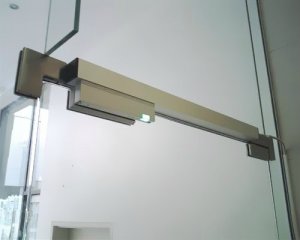MAGNETIC DOOR LOCK
The Different Type Of Locks And Their Usages
We all use locks throughout the day; we even use them in different circumstances, having contact with different types of them. But do you know what are the parts that make a lock, the elements that compose it?
Types Of Locks:
In principle, we have to say that there are two types of well-marked locks:
We have mortise locks, which are the most traditional, and which are placed inside the doors, being a comfortable and safe option.
In the second instance, we have the locks to overlap. In this case, they are placed above the door, and not inside it.
Thirdly, and although they are not really a lock something else magnetic door locks, we have the locks, a more modern and almost always safer option.
Components Of A Lock:
1. Frontal:
It is the part that is almost always in sight of any lock. We can see the screws that hold the cylinder. Many know only this part of the Magnetic Door Locks.
2. Slip:
The slip is the piece of the lock that is located on its front, entering and leaving. It is the one that appears or disappears when we lower or yield the handle of the lock, or when we insert the key and turn it on the cylinder. If the slip did not retract, it would be completely impossible for the door to open.
3. Bolts:
The bolts or pale tones stand out because they are the pieces that retract before the slip so that the door can be opened. magnetic door locks Of course, they only work when we insert the key, both to open it and to close it again.
4. Bowler Hat:
The cylinder is also known as a light bulb or cylinder, according to different markets, although we are always talking about the same piece. It is one of the most important pieces, as it is where we place the key to start the process. If the cylinder is damaged, one of its advantages is that it can be changed individually.
5. Knob Or Handle:
The knob, handle, or doorknob in other countries, is the piece that we have to lower so that the door opens. It is always present, whether or not there is a lock.
6. Keeper:
The strike is the part of the lock that the slip is within. It is an iron plate, which is also suitable for bolts.
7. Keyhole:
If your lock doesn’t have a cylinder, then it has a keyhole. It is a variant in which the key is placed to open the locks that do not have bowlers.
Different Types Of Keys:
1. Classic Keys: Classic keys are practically not used in those times. They are those that are placed in large locks, and therefore, being impractical, they are not in fashion.
2. Serreta Keys: The serreta keys or saw keys are much more famous. Indeed, it is the most popular key among all those we know today. It has a jagged edge, a unique register that allows you to open the door and not be confused with others.
3. Security Keys: Its name already indicates it, and the truth is that security keys are usually the most common option for armored doors. They have both indentations and straight edges. Beyond that, they tend to be quite common at doors every day.
4. Pomp Wrench: Similar to the paddle wrenches, which you will know later, these wrenches stand out especially for having teeth on both parts of the wrench,
5. Paddle Wrenches Or Bit: And here are the paddle or bit keys. You have to know about them that are used in the locks. The truth is that they serve more than anything for armored doors. They stand out, in any case, for being used on doors that have the cylinder hidden, so that we can hardly see the hole where they are placed.
6. Cruciform Keys: Finally, cruciform keys are those that have a kind of cylindrical spike in the center, with a length greater than usual. There are them with more or less teeth, and as their name indicates, sometimes they also have a cross shape.
7. Weigh: What type of protection you want for your home or business. Evaluate the advantages of the different types of metal door locks and what type of metal doors are the most suitable to improve the protection of your home or house. And avoid problems and annoyances.

